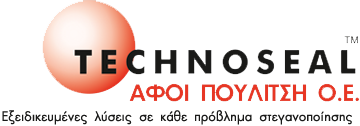Mechanical Seals Installation Procedure
Correct seal setting is important in the successful operation of a mechanical seal.
Cartridge seals unitize the complete seal assembly on a sleeve such that the entire seal is installed simultaneously.
Component seals are assembled sequentially on the equipment and require careful measurements to properly locate and lock the rotating components relative to the stationary components.
When measuring the setting or securing cartridge seals, always make sure the shaft is in the same position as when the equipment is operating (e.g. including the effects of thermal growth or contraction of the shaft relative to the casing).
-
To ease installation, gaskets may be lightly lubricated. Lubricant must be compatible with both handled product and gasket material. Generally, silicon grease is suitable but this should be verified before applying.
-
Caution: avoid over compressing a bellows. This could result in reduced spring force and length.
-
Some mechanical seals are sensitive to direction of rotation. Verify that the direction of rotation of the shaft corre- sponds to that of the mechanical seal before installation.
Disassemble equipment in accordance with the equipment manufacturer’s instruc- tions to allow access to seal installation area.
Inspect surfaces under gaskets to ensure they are free from pits or scratches. Break all sharp corners on shaft steps, threads, reliefs, shoulders, key ways, etc. over which gasket(s) must pass and/or seal against.
Equipment Check
-
Shaft runout should not exceed 0,05 mm (.002”) TIR (Total Indicator Reading) at any point along the shaft for ball or roller type bearings. For sleeve type bearings, refer to manufacturer instructions. If the equipment is not completely dismantled, verify runout near seal location.
-
Shaft endplay should not exceed 0,25 mm (.010”) TIR, regardless of thrust bearing type.
-
Radial shaft movement should be checked against the equipment manufacturer's specifications. Generally 0,05 - 0,10 mm (.002” -.004”) will be applicable for ball or roller type bearings. For sleeve or journal type bearings, values will generally be in the order of 0,10 - 0,15 mm (.004” - .006”).
-
Seal chamber squareness to the shaft centreline should be within 0,015 mm per 25 mm seal chamber bore (.0005" per 1" seal chamber bore). Note: make sure that shaft endplay does not affect the reading. Verify the smoothness of the seal chamber face for a good gasket joint.
-
Concentricity of the shaft to the seal chamber bore should be within 0,025 mm per 25 mm shaft diameter (.001" per 1" shaft diameter) to a maximum of 0,125 mm (.005") TIR.
-
Ensure seal faces and joints are free of scratches, contamina- tion and other damage. Prior to installation, wipe lapped surfaces clean with a lint free cloth and quick drying solvent. Lubrication of seal faces is not recommended unless specified on the seal assembly drawing.
Assemble seal chamber and shaft (including thrust bearings, if applicable) and verify/scribe the seal setting distance as shown on the assembly drawing. Other setting aids such as spacer rings may be indicated on the assembly drawing.
When applicable, pre-assemble the rotating and stationary components or sub-components of the seal in accordance with the assembly drawing.
Assemble the seal components sequentially onto the equipment, fastening the rotating components. Locate the gland(s) against the face of the seal chamber.
Orient the connections on the seal gland(s) as indicated by the seal assembly drawing
Evenly torque gland bolts/nuts to prevent cocking of the gland or uneven gland pressure against the seal chamber.
Complete the remaining equipment assembly including thrust bearings, if applicable.
Assemble interconnecting piping as per API-plan and piping instructions as given in paragraph 7. See also (if applicable) auxiliary system installati on and operating manual.
Inspect equipment and driver alignment in accordance with coupling and/or equipment manufacturer's instructions.
After bringing the unit up to operating conditions (pressure and tempera- ture), recheck pump to driver alignment. Make adjustments as necessary.
Useful Operational Tips
Do not start the equipment dry
For seals using external cooling and/or an external flush, apply cooling and/or flush prior to seal start-up. Avoid inadvertent operation of valves located in the cooling system that might result in shutting off the cooling flow.
Open valves to flood equipment with product.
Vent all air and/or product vapor from the equipment casing and the seal chamber before start up.
Vent casing and tubing of heat exchange (if applicable).
Process fluid must flood and pressurize the seal chamber at all times for single seal and non-pressurized dual seals.
Barrier fluid must flood dual seals at all times during equipment operation.
If the equipment is not operating properly (e.g. seals and/or bearings running hot, cavitation, heavy vibration, etc.), shut down the equipment, investigate and remove the cause.

 ΤΕΧΝΙΚΗ ΥΠΟΣΤΗΡΙΞΗ
ΤΕΧΝΙΚΗ ΥΠΟΣΤΗΡΙΞΗ